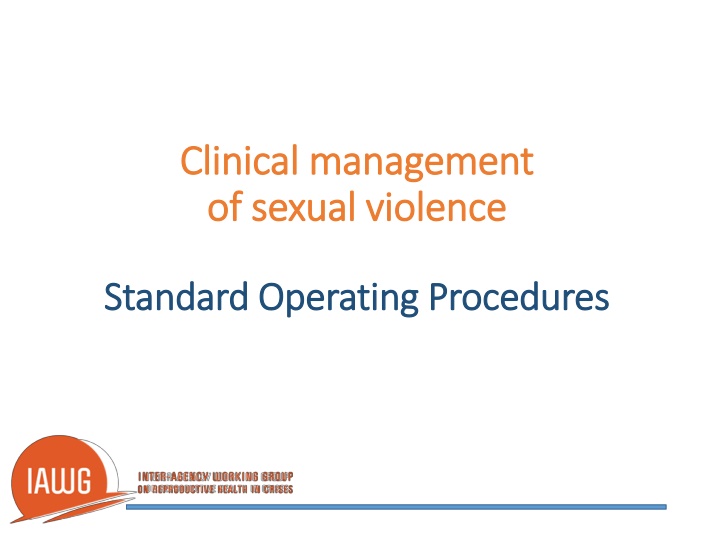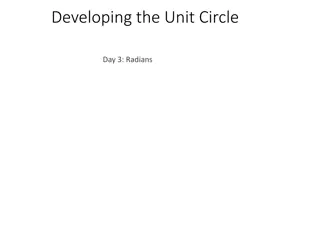
Managing Sexual Violence: Standard Operating Procedures and Response Strategies
Explore the comprehensive approach to managing sexual violence through Standard Operating Procedures (SOPs) and effective response strategies focused on health, psychosocial support, safety, and legal aspects. Learn about coordinating, guiding principles, referral mechanisms, and survivor-centered SOPs to ensure a survivor-centric and coordinated response in cases of sexual violence.
Download Presentation

Please find below an Image/Link to download the presentation.
The content on the website is provided AS IS for your information and personal use only. It may not be sold, licensed, or shared on other websites without obtaining consent from the author. If you encounter any issues during the download, it is possible that the publisher has removed the file from their server.
You are allowed to download the files provided on this website for personal or commercial use, subject to the condition that they are used lawfully. All files are the property of their respective owners.
The content on the website is provided AS IS for your information and personal use only. It may not be sold, licensed, or shared on other websites without obtaining consent from the author.
E N D
Presentation Transcript
Clinical management Clinical management of sexual violence of sexual violence Standard Operating Procedures Standard Operating Procedures
Response Response To develop an appropriate response, you need to understand the possible consequences of sexual violence Four main areas of programming: Health Psychosocial Safety/Security Legal/Justice
Standard Operating Procedures (SOPs) Standard Operating Procedures (SOPs) Coordination, guiding principles, referral mechanisms Health Psychosocial Refugees/IDPs (Individuals, groups, etc) Security and protection Legal/justice UN agencies, government authorities, NGOs, local society Adapted from UNFPA, IPPF, UNSW. 2009. Facilitator s Manual: Training on the Minimum Initial Service Package (MISP) for Sexual and Reproductive Health in Crises: A course for SRH coordinators.
Prepare for survivor-centered* SOPs What are the country s laws and policies? What laboratory facilities are available? What are the existing protocols (post-rape medical care, incident reporting, etc)? Where to provide care and support? Where and how to refer? How to coordinate between responders? What should the community know? * Respect the rights, needs, choices, wishes and dignity of the survivor at all times
Content of SOPs Content of SOPs Definition of GBV, its categories and key concepts Guiding Principles SOPs are in place at the camp and community level Roles and responsibilities in terms of prevention and response Focal point in each sector: Health, legal/justice, community, women s groups, implementing and operational partners, police, the government Reporting and referral mechanism Coordination, monitoring, and evaluation mechanisms
Advantages of SOPs Advantages of SOPs Enhance coordination between partners by clarifying roles and responsibilities Facilitate a common and agreed understanding of what needs be done and how it should be done Common definitions, reporting, and monitoring Facilitate effective communication Ensure a timely and quality response to survivors
References References United Nations Population Fund, International Planned Parenthood Federation and the University of New South Wales, Facilitator s Manual: Training on the Minimum Initial Service Package (MISP) for Sexual and Reproductive Health in Crises: A course for SRH coordinators. (Geneva. 2009).






















